Many people believe that one of the key challenges with strategy is actually figuring out the right way to develop it. The approach and process that you choose will more than likely have an impact on the end result. Consequently, at 2by2 we pay close attention not only to the end result, but also the way to get there.
In this Insight on Strategy, we would like to share our perspective on the process of developing a viable strategy that can help grow your business and yield better results.
Although there is no single strategy development process best practice, the principles we will share in this article have been proven to work in several assignments in which 2by2 has helped companies develop comprehensive business strategies.
The process is there to support
Let’s start by making one key point very clear: the process is secondary when it comes to developing a strategy. The only thing that matters is the strategy in itself and its ability to fuel profitable growth. How you get there is less important. Some companies have defined comprehensive processes with descriptions on multiple levels in order to make sure they have a methodology and a thorough approach to developing their strategy; others have not defined any process at all. Remember that the process is there to support you; the process has no value in itself.
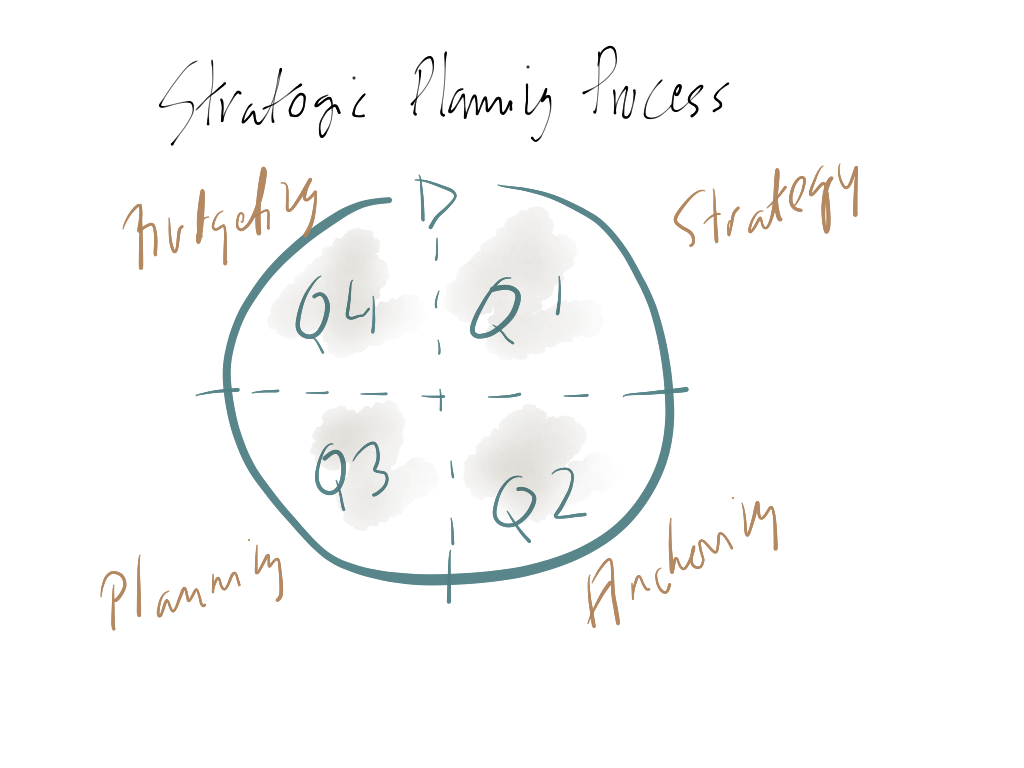 In our strategy engagements, we sometime come across existing strategy development processes; one of the most common of these is the “yearly strategic planning process.” This planning cycle usually starts with a strategy review in quarter 1. In Q2, the strategy is supposed to be anchored more broadly in the organization, for instance by having the functional units digest and reflect on the strategy. Strategy realization planning starts in Q3 and in Q4 the new strategy is reflected in the budgeting process. Then it all starts over again at the start of the next year, with the strategy review in quarter 1. While this usually seems to be a logical way of structuring a complex process, we believe that the yearly strategic planning process has several flaws; the most severe of these is that it simply isn’t aligned with how the business environment evolves. Remaining competitive in an industry does not necessarily mean reviewing your strategy in the first quarter of every year; for some companies, it might mean reviewing the strategy every third year and for other companies it might have to be done every month – it very much depends upon the industry in which you operate. Regardless of the industry, remaining competitive will require you to react on paradigm shifts or other significant moves in the market, even if they come in the fourth quarter when you are in the middle of your budgeting process.
In our strategy engagements, we sometime come across existing strategy development processes; one of the most common of these is the “yearly strategic planning process.” This planning cycle usually starts with a strategy review in quarter 1. In Q2, the strategy is supposed to be anchored more broadly in the organization, for instance by having the functional units digest and reflect on the strategy. Strategy realization planning starts in Q3 and in Q4 the new strategy is reflected in the budgeting process. Then it all starts over again at the start of the next year, with the strategy review in quarter 1. While this usually seems to be a logical way of structuring a complex process, we believe that the yearly strategic planning process has several flaws; the most severe of these is that it simply isn’t aligned with how the business environment evolves. Remaining competitive in an industry does not necessarily mean reviewing your strategy in the first quarter of every year; for some companies, it might mean reviewing the strategy every third year and for other companies it might have to be done every month – it very much depends upon the industry in which you operate. Regardless of the industry, remaining competitive will require you to react on paradigm shifts or other significant moves in the market, even if they come in the fourth quarter when you are in the middle of your budgeting process.
While some great strategies have been crafted on the back of a café napkin, we believe that at least thinking through your desired approach and process for developing your strategy will improve the likelihood of success. This article will help you start that thinking process.
The strategy process – an overview
The strategy process that we have developed here at 2by2, based on our experiences with different strategic engagements, is built around five key steps: market landscaping, positioning options, strategy formulation, business case modeling, and realization.
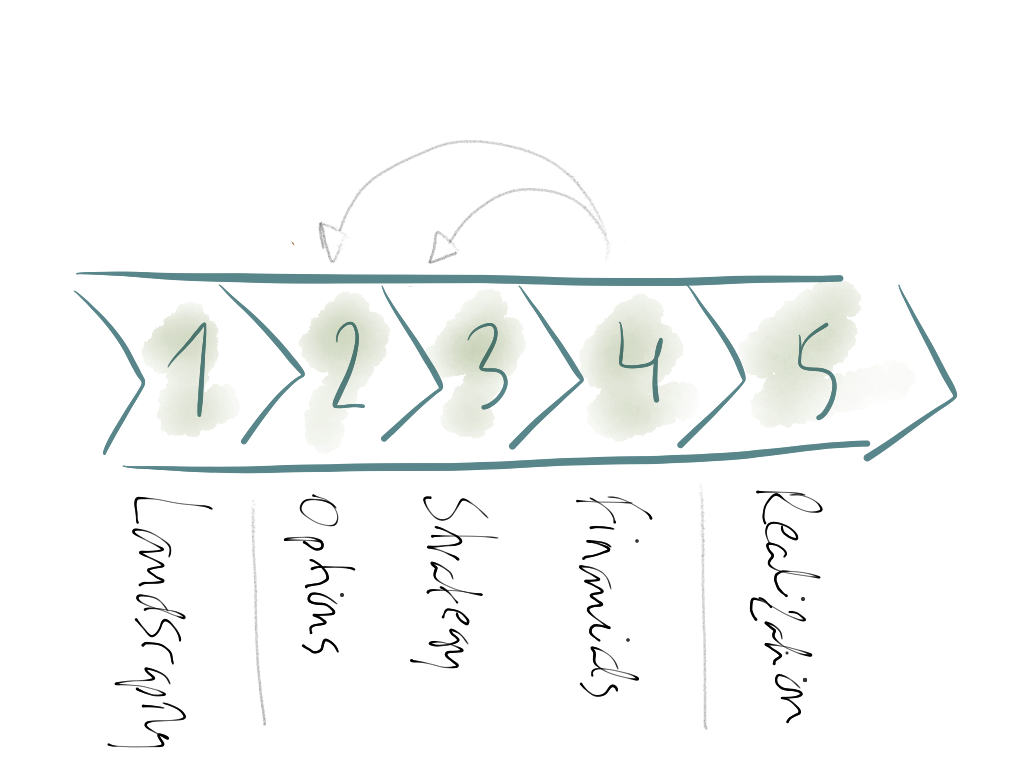
Before proceeding with the next step in the process, we always seek alignment in the executive team that is engaged to work on developing the strategy. Each step builds on the last. If we end up trying to formulate the strategy only to find out that we have disagreement about the future scenarios of the market, it will definitely be hard to achieve a solid, well thought-through strategy that will drive profitable growth.
Step 1: Landscaping
The first step of our proposed strategy development process – landscaping – is clearly an essential one. Setting aside a sufficient amount of time at the beginning of the process to thoroughly assess the market landscape always pays off at the end of the process. In many cases, however, we have found that executives fail to see the value of this step, or simply claim that they already have done it and that it will not add any significant value. Needless to say, in our experience this is very seldom the case.
Essentially, there are two major areas that need to be sufficiently penetrated as part of the landscaping effort: the external context and the internal context.
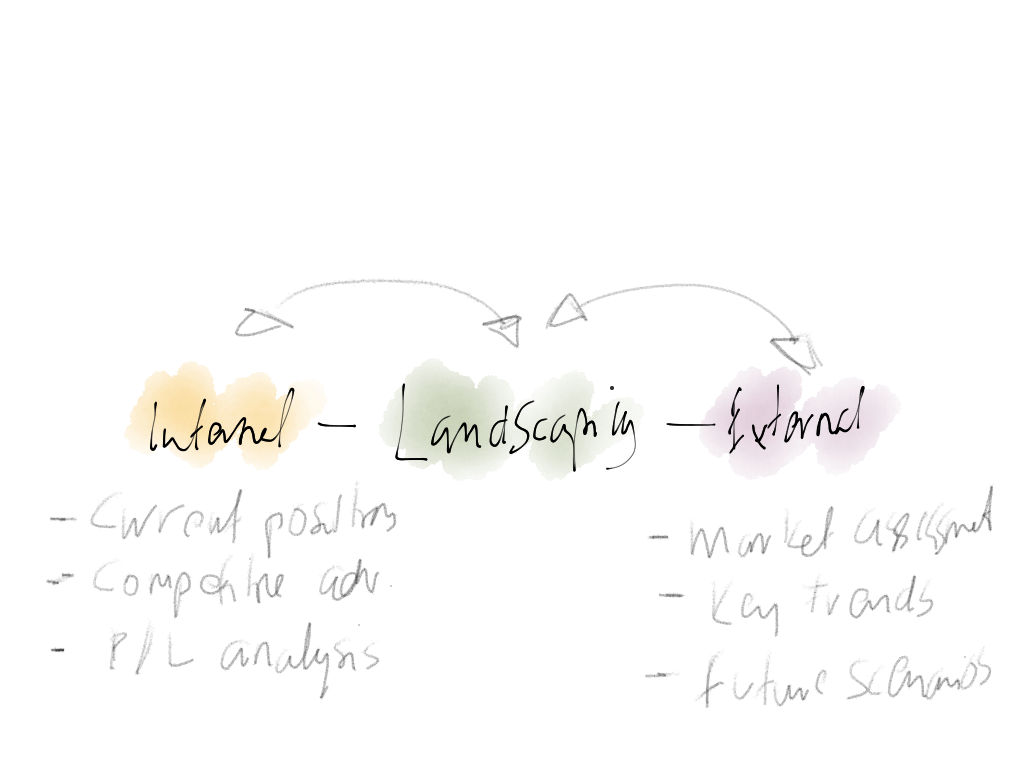
Market assessment (external context)
Analyzing the external context is all about building a better, fact-based understanding on the state of the market, which is the context in which any company needs to compete. Based on a comprehensive understanding of the current market and by identifying key trends, it is also important to invest time in painting the different future scenarios of how the market might evolve.
One of the key aspects of this step in the process is to challenge yourself and the current paradigms in which you think; sometimes a brilliant strategy starts with re-thinking how to segment the market.
During this step, it is also important to stay focused; that is, to know what analysis needs to be done and, from that analysis, identify what data is required. It is easy to end up in a situation where you embark on an endless hunt for more data in order to do some additional analysis. Sometimes this is called “boiling the ocean;” make sure not to try that – it takes a lot of heat to boil the ocean!
Starting position (internal context)
The second part of the landscaping effort is all about gaining a better understanding of your starting position. This will be especially helpful when you start to evaluate what position to take in the market and when assessing possible capability gaps.
Through this assessment, you should be able to lay out your current position in the market and explain how you are competing effectively today. Furthermore, it is important at this time to make a financial assessment of your starting position; for example, to find out which products, markets and/or customers contribute to your business. It is important to look at both revenue and profits. Sometimes the revenue contributors are not the same as the profit contributors due to factors such as differences in price and cost to serve.
Step 2: Options
The second step of the strategy development process that we usually base our work upon aims to identify and assess possible strategic options. It is important here to try to be comprehensive; that is, try to identify all possible options, not just the one that you believe will be basis for your future strategy. All possible options should be properly evaluated; the option no one actually prioritized sometimes turns out to be a fundamental game changer for a company.
In the second step of the process, three different areas usually need to be covered. These are identifying sources of competitive advantage, defining a comprehensive list of options, and assessing the options.
Sources of competitive advantage
First of all, we usually spend some time thinking through possible sources of competitive advantage, which involves assessing and clearly defining ways of competing in an industry. In this effort, we might reach the conclusion that there is a premium market in which you can compete with outstanding product quality, but also a mass market where your competitive advantage is scale. Having completed this exercise, you should know the theoretical possibilities of competing in your market. Of course, the conclusions of this assessment will vary depending on which industry you operate in, and they might also vary over time.
Strategic options
Having identified all possible sources of competitive advantage, we are ready to identify the strategic options.
Strategic options are basically the options around which you could build a strategy. The options identified should all be based on the various identified sources of competitive advantage. Consequently, if we have concluded that there are only two sources of competitive advantage – premium product and scale – then all strategic options we identify should be based on these. However, you might have different strategic options for any single source of competitive advantage; for example, if there is a possibility of competing on scale, there might be an opportunity to compete on scale in specific segments of the market.
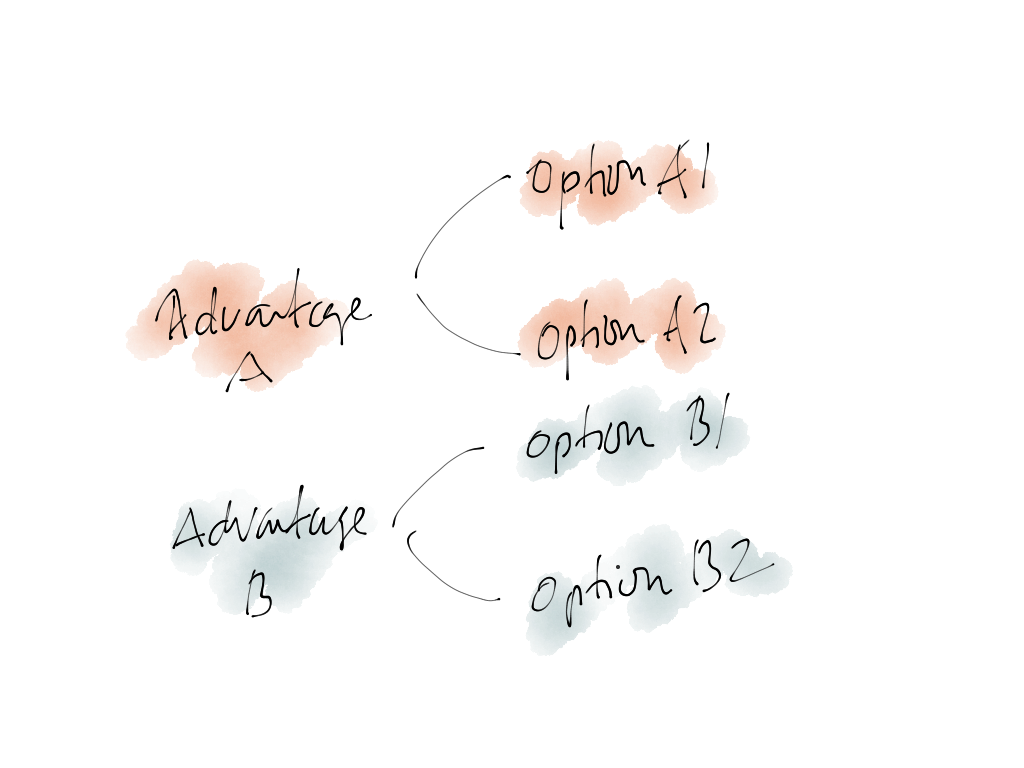
In this exercise, it is very important to be comprehensive. All possible strategic options must be identified. Any option that is not identified at this stage might be a missed opportunity, since it will not be considered as an option upon which to base your future strategy. At 2by2, we work with specific methods to ensure that the strategic options assessment is comprehensive.
Options assessment
Having defined a comprehensive set of strategic options, it is time to assess all of the options through a structured approach.
Option assessment must always start by defining a set of criteria with which to assess the options. We usually recommend a mix of quantitative and qualitative criteria. Quantitative criteria are sometime somewhat harder to assess, yet they are very important for making the assessment complete and trustworthy.
Criteria to use when assessing strategic options might vary from case to case and could include top-line impact, cost impact, uniqueness in market, sustainability, time to realization, cost of realization, risk, etc. The important thing here is to make sure that you select criteria that allow you to make a fair and preferably fact-based assessment of the strategic options you have identified.
Step 3: Strategy
In most of the cases, strategy formulation is what you expected to begin with when engaging in a strategy development process. However, if you don’t have very clear view of the market landscape, your own starting position and possible positioning options at this point, then you are unlikely to successfully define a strategy that will fuel profitable growth for you.
If, on the other hand, you have completed the two first steps successfully, then you are in a very good position to engage in the process of actually formulating a strategy.
Formulating a strategy means clarifying your overarching aspirations, articulating your position in the market, and performing a high-level analysis to identify the capabilities required to realize that position.
Aspirations
In the strategy development process, it is crucial to reach a conclusion about the overarching aspirations for your company. This is what you might call vision. Unfortunately, vision is very ambiguous. Furthermore, as a company’s vision usually is communicated externally (on a website, for example), we believe that the vision is not the best starting point when defining your strategy.
Articulating your overarching aspirations is important as a starting point in formulating your strategy. This means thoroughly thinking through your ambitions and concretely articulating and visualizing a wanted position. Your overarching aspirations can and potentially will have a significant impact on the strategy you chose to formulate for your company.
Strategy
Formulating the strategy for your company is naturally one of the key steps in the strategy development process. This means clearly defining your position in the market based on a few key dimensions. How you describe your strategy might vary slightly from case to case. At 2by2, we usually suggest that you at least define your strategy based on these four core positioning dimensions: target segments, market offerings, business model, and competitive advantage.
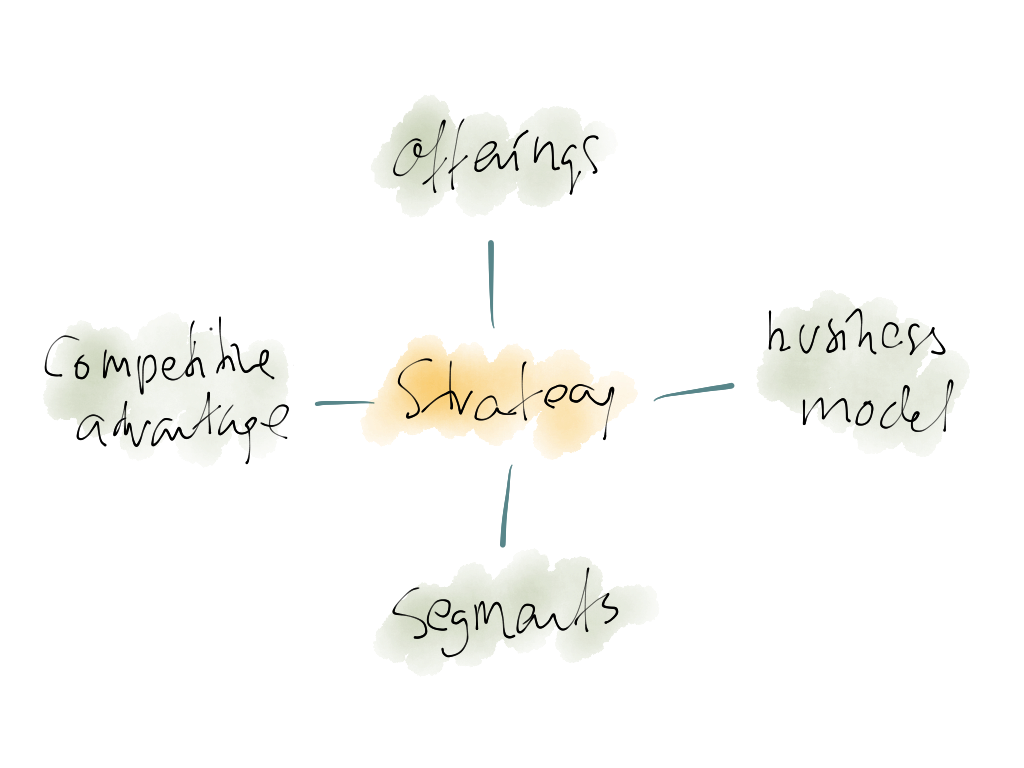
Defining your target segments means thinking about which markets and customer segments you should address. This is clearly a very important aspect of your strategy as, at the end of the day, you can seek growth through such avenues as expanding into new customer segments, potentially addressing slightly different needs, and/or seeking growth by expanding your business into new markets/countries. As in many other areas of the strategy work, it is very important here to be specific and precise about which markets and customer segments to focus on, as well as which markets and customer segments you should not focus on serving.
The next step in the process of defining your strategy is to clearly articulate what you would like to offer your customers; that is, your market offerings. This can be a logical description of the products and/or services that you are planning to bring to the market, and these can of course vary by market and/or by customer segment.
The third step in the process of defining your strategy is to think through how you are planning to charge for your market offerings; that is, your business model. This is essentially to describe how you are planning to earn the money from your business; for example, are you planning to earn your revenue primarily from services and then ship the products at low or even no cost, or should the majority of your revenue come from product sales and your service offering be primarily a way of driving sales? These are essential decisions that are likely to have a significant impact on the way you run your business.
Having thought through and clearly defined target segments, market offerings, and your business model, the final step is to articulate how you will compete in the market; that is, your competitive edge. This essential clarifies why your customers will buy your products and/or services instead of the products and/or services delivered by your competitors.
High-level capability gap assessment
Strategy without realization seldom has any real and concrete value for a company. A strategy that doesn’t deliver any value and doesn’t have a direct impact on your bottom-line is basically useless! Therefore, it is important in the strategy development process to think through the fundamental requirements for being able to realize the strategy. We usually approach this question by trying to identify the capability required to deliver on the strategy. This usually allows us to make a comparison with the current capability set of the company and, from that, aggregate a list of possible capability caps.
Identifying the capability gaps is important. It will not only give you a perspective of how difficult and challenging realization of the strategy will be, it will also give you an idea of the cost of realizing the strategy, which will be essential when, in the next step of the process, we try to validate the strategy through financial modeling.
Step 4: Financials
In our view, strategy should drive a company’s revenue growth and/or improve its profitability. If the strategy fails in this regard, the value of the strategy is limited. We often talk about a concept that we like to call “value through strategy.” Consequently, when developing a strategy it is essential to also model its financial impact. In our strategy engagements, we usually start to consolidate a financial model already in in the beginning of the engagement. This model allows us to model the financial outcome of the strategy by changing some of the key assumptions behind the financial results.
In the end of the strategy development process, we finalize the financial modeling to really assess the true potential impact of the developed strategy. This mean modeling the development of top-line revenues as well as modeling implications on OPEX and CAPEX in order to understand strategy impact on future profitability, down to EBITDA and EBIT.
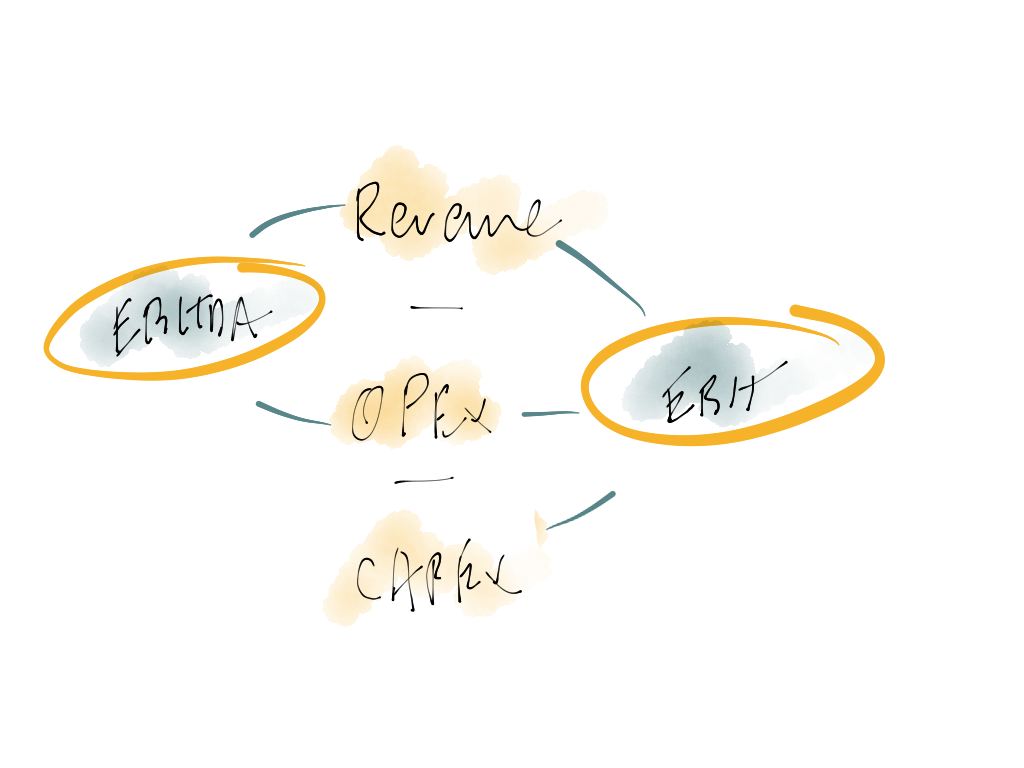
Furthermore, we usually perform a sensitivity analysis as part of the financial modeling; the purpose of the sensitivity analysis is to further deepen our understanding of the underlying assumptions behind the financial model. This is usually done through scenario modeling; for example, what is the top-line development if there is a 7 percent year-on-year price decline instead of a 5 percent decline?
Step 5: Realization
A strategy development process usually results in a strategy that implies significant change for the company; this change is necessary in order to, for instance, strengthen a company’s competitive position in the market, re-focus operations towards new segments in the market, or re-structure the business model with which the company operates. All these changes need to be well coordinated in a comprehensive realization effort. Without realizing the strategy, you run a significant risk of not being able to capitalize on the opportunities you have identified.
The realization effort normally covers four main areas.
Business planning
Business Planning is the activity in which the strategy is allowed to reflect everything in the context of the strategy (read previous article on the strategy context to get more specifics on what’s in the context: http://www.2by2.se/insight-on-strategy-the-strategy-context/). This is a crucial step in realizing the strategy; without the business planning, the defined strategy runs the risk of continuing existing in isolation, without having any impact on the day-to-day operations of the company. Effectively running business planning based on the newly defined strategy means letting the strategy reflect and impact targets and objectives, the investment plan, the operations of your company etc.
Anchoring/communications
Strategy is best developed in a team with people who have been selectively chosen to contribute to the process (we will cover strategy developing teaming in a separate edition of Insight on Strategy). This means that in order to realize the newly defined strategy, it should probably be more broadly communicated in the organization. The extent to which the strategy needs to be communicated should be determined by the degree of change it implies and the extent to which a broader involvement from the organization is required in order to realize it.
A strategy that truly defines a competitive advantage of a company, an edge that should help a company grow more successful and further both top-line and profitability growth, is likely to contain aspects and specific details that should be treated as confidential. At 2by2, we are strong believers in the importance of great internal communication. However, we urge you to thoroughly think through the confidentiality aspect of your strategy before engaging in a broad and transparent communication program. We see few arguments with communicating your strategy externally. On the contrary, if you believe you can safely communicate your strategy externally, for example on your company’s homepage, then you should reflect on whether your strategy really articulates how you are planning to compete in the market.
Strategy execution
Strategy execution is all the extraordinary activities that need to happen in order to realize the strategy as you have defined it. It is crucial early on in the execution process to identify all necessary extraordinary activities; that is, ensure that the list of activities identified is comprehensive. In most cases, executing the strategy will also require you to change the way you execute some of your ordinary activities; herein lies what is probably the biggest challenge, as people performing this activity today need to perform them differently tomorrow. As explained below, strategy follow-up is one of the key tools for making strategy execution work. Furthermore, moving in to strategy execution with the ambition of being consistent and persistent in your effort of realizing the strategy usually pays off.
Strategy follow-up
Strategy follow-up is absolutely crucial when executing on your strategy. The basis upon which strategy follow-up should be performed must be defined early on in the process and should be based on a mix of quantitative and qualitative measures. In order to make strategy follow-up happen, it must be pro-actively planned. For example, plan to follow-up on strategy execution as an extraordinary performance reporting process and/or integrate strategy execution follow-up as part of your normal performance measurements.
A strategy development blueprint
In this Insight on Strategy, we have tried to describe our perspective on the process of developing a viable strategy that can help grow your business and yield better results. The process described covers five major steps; landscaping, options, strategy, financials and realization.
Although, as stated, there is no single strategy development process best practice, the principles we have shared in this article have been proven to work in several assignments in which 2by2 has helped companies develop comprehensive business strategies. We sincerely hope it will help you in your strategy development efforts!
About Insight on strategy
Strategy is one of the most overused and misused words in the business community. It is a term that everybody loves to use but few dare to explain. 2by2 publishes Insights on Strategy to help companies improve their ability to create value through strategy by better understanding what strategy actually is, by learning how to spot the difference between a good strategy and a not-so-good strategy, and by gaining perspectives on the most common pitfalls when developing a strategy.
Previously published articles in this series:
A definition: http://www.2by2.se/insight-on-strategy-a-definition/
Competitive advantage: http://www.2by2.se/insight-on-strategy-competitive-advantage/
Strategy context: http://www.2by2.se/insight-on-strategy-the-strategy-context/
The good strategy: http://www.2by2.se/insight-on-strategy-the-good-strategy/
Strategy pitfalls: http://www.2by2.se/insight-on-strategy-strategy-pitfalls/


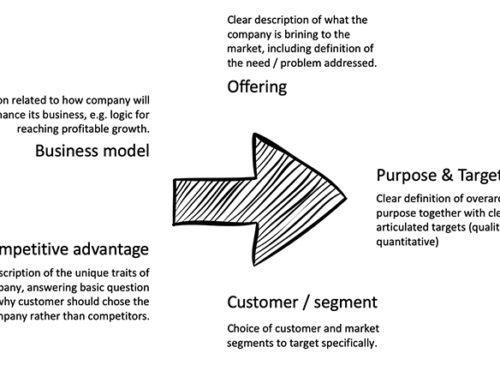
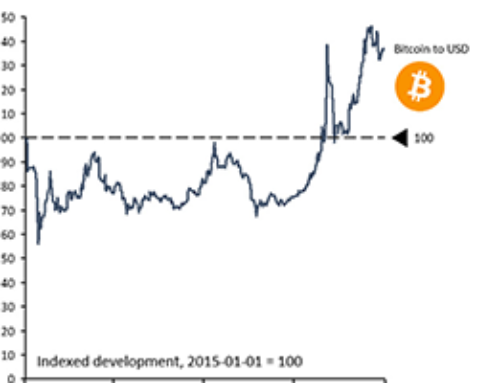
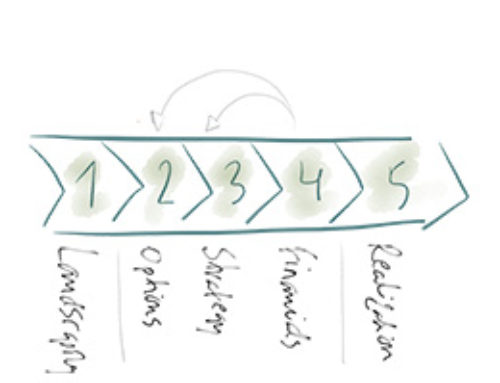
[…] http://www.2by2.se/insight-on-strategy-strategy-pitfalls/ The strategy development process: http://www.2by2.se/insight-on-strategy-the-strategy-development-process/ The strategy development […]
[…] A definition: http://www.2by2.se/insight-on-strategy-a-definition/ Competitive advantage: http://www.2by2.se/insight-on-strategy-competitive-advantage/ Strategy context: http://www.2by2.se/insight-on-strategy-the-strategy-context/ The good strategy: http://www.2by2.se/insight-on-strategy-the-good-strategy/ Strategy pitfalls: http://www.2by2.se/insight-on-strategy-strategy-pitfalls/ The strategy development process: http://www.2by2.se/insight-on-strategy-the-strategy-development-process/ […]